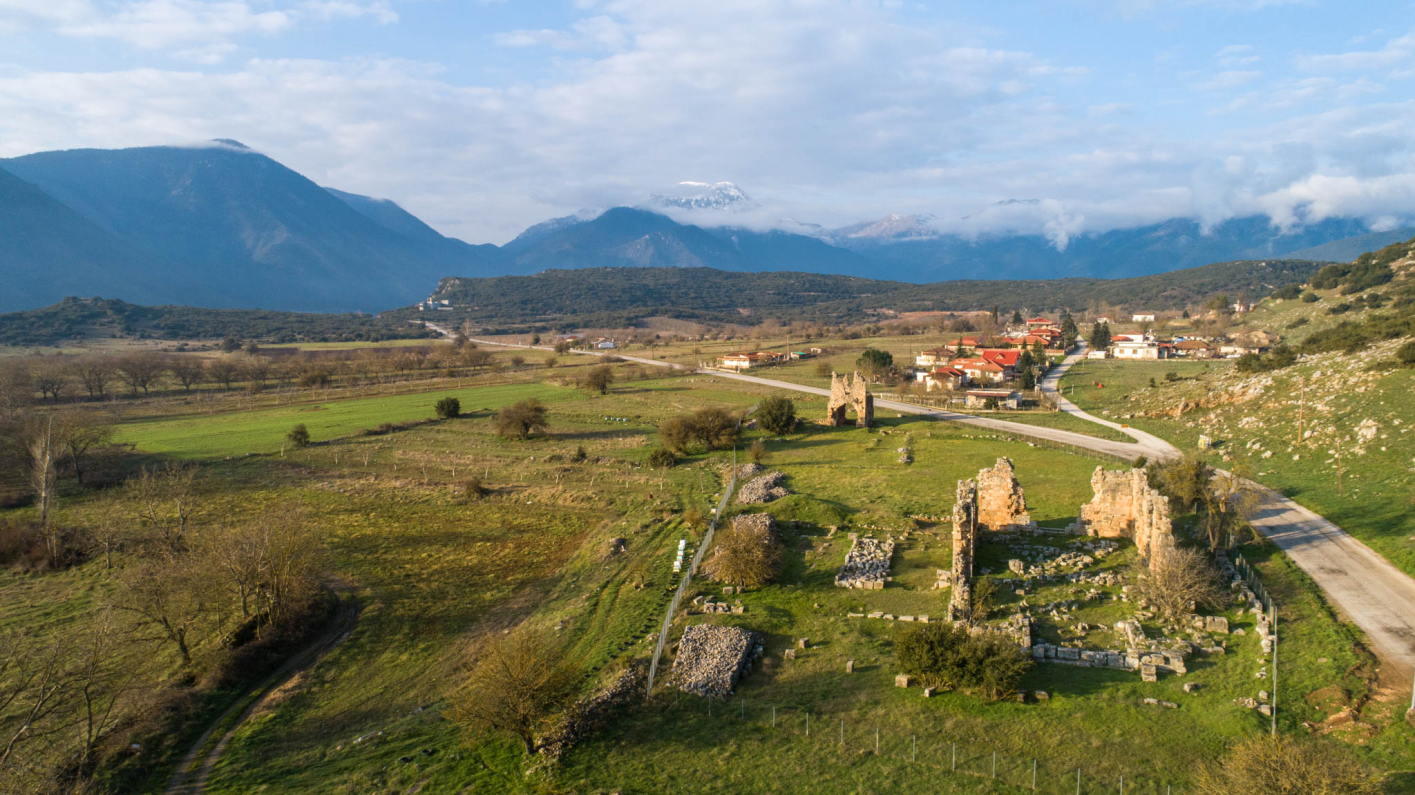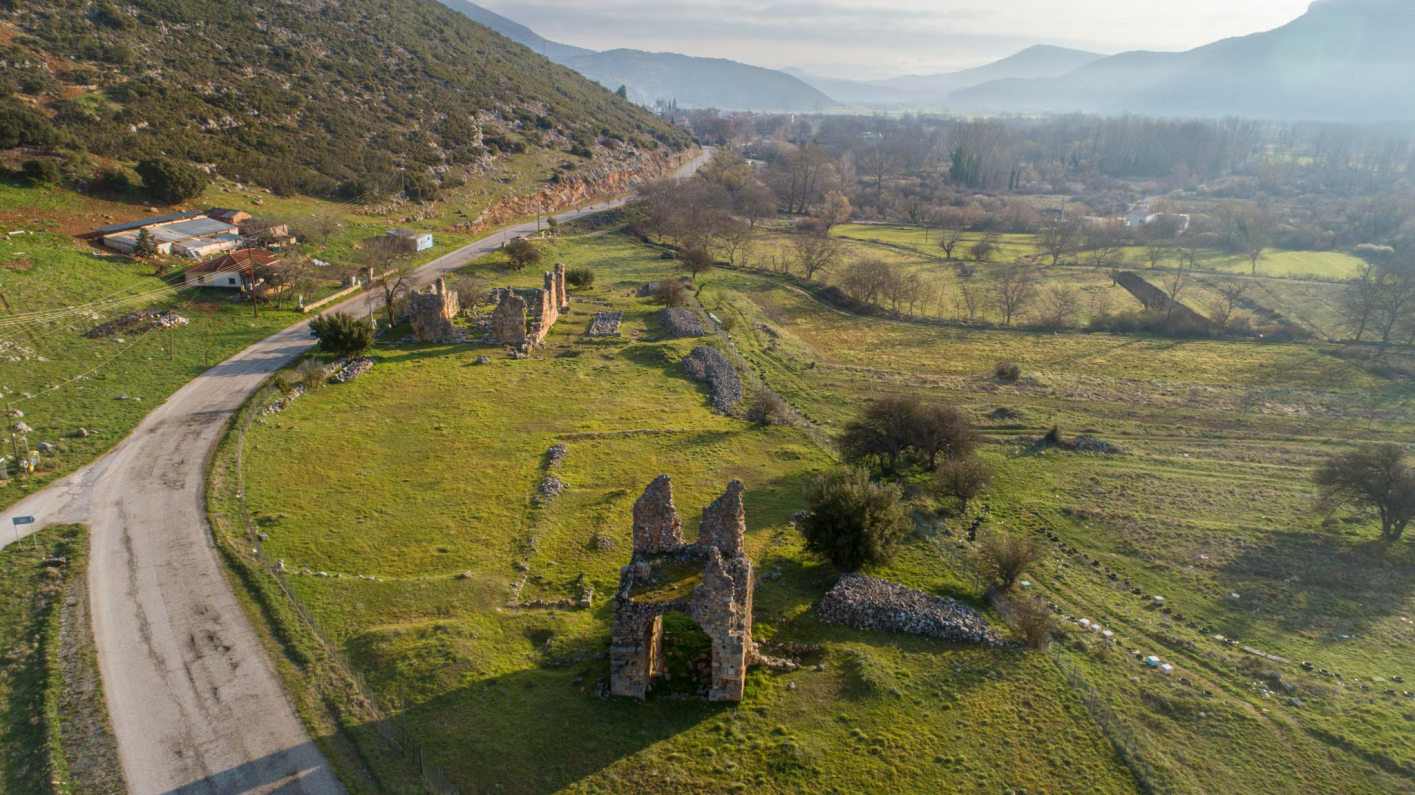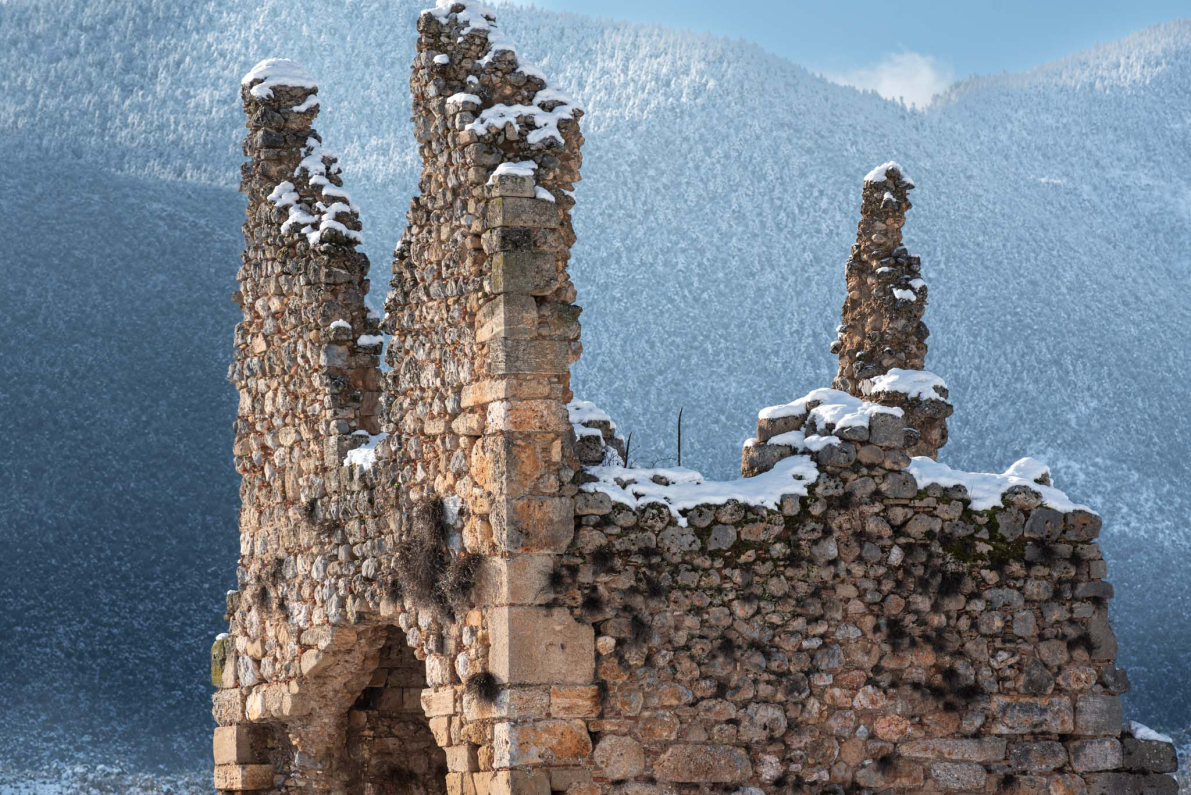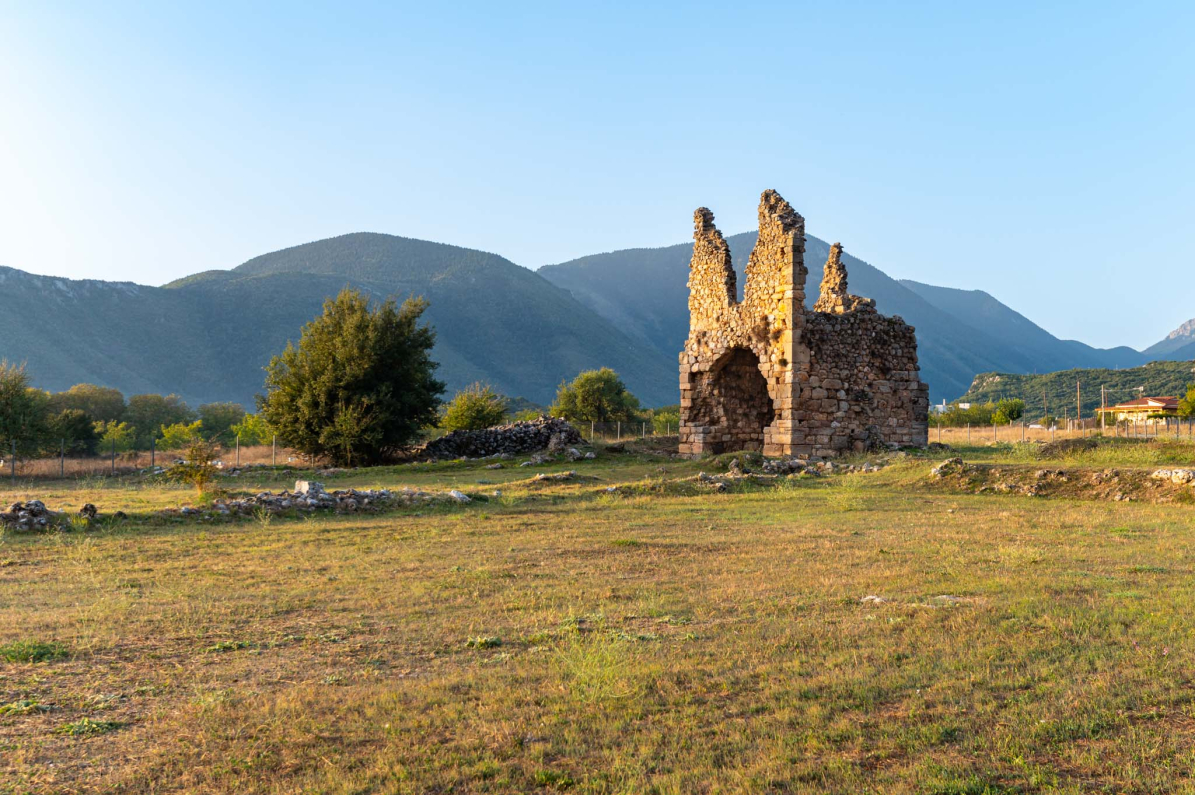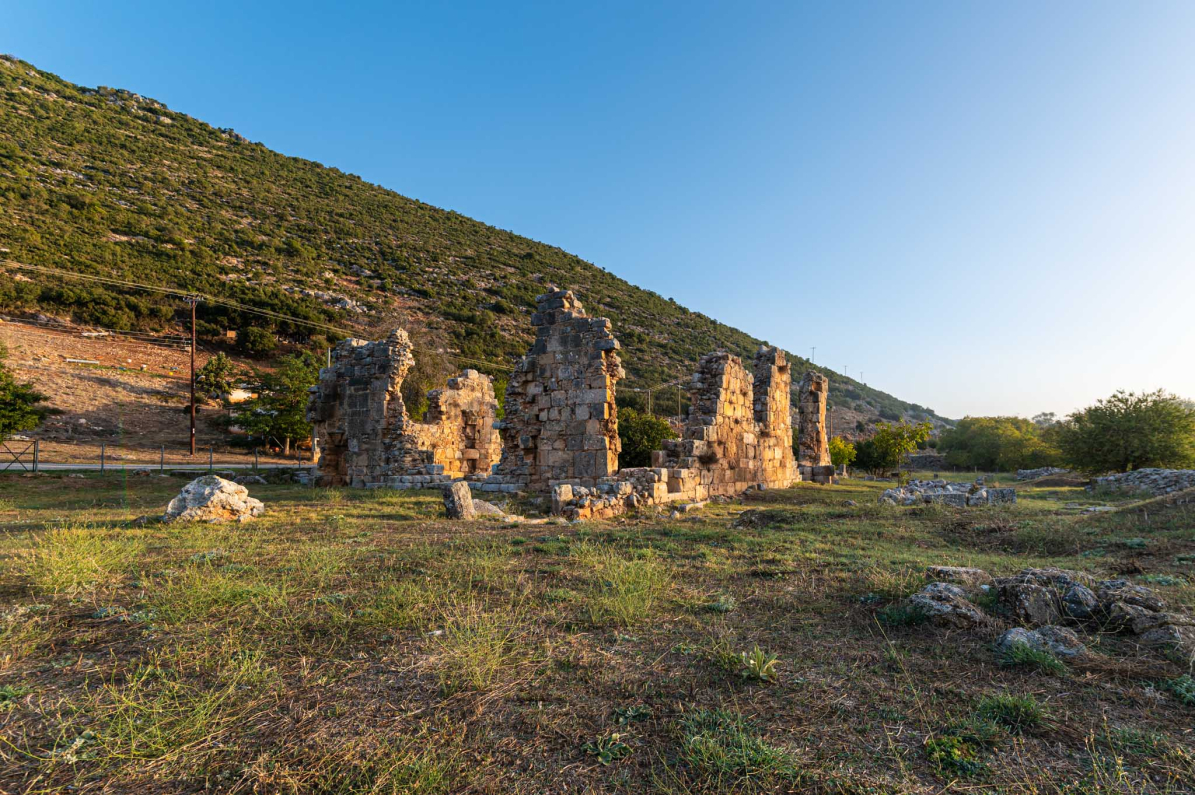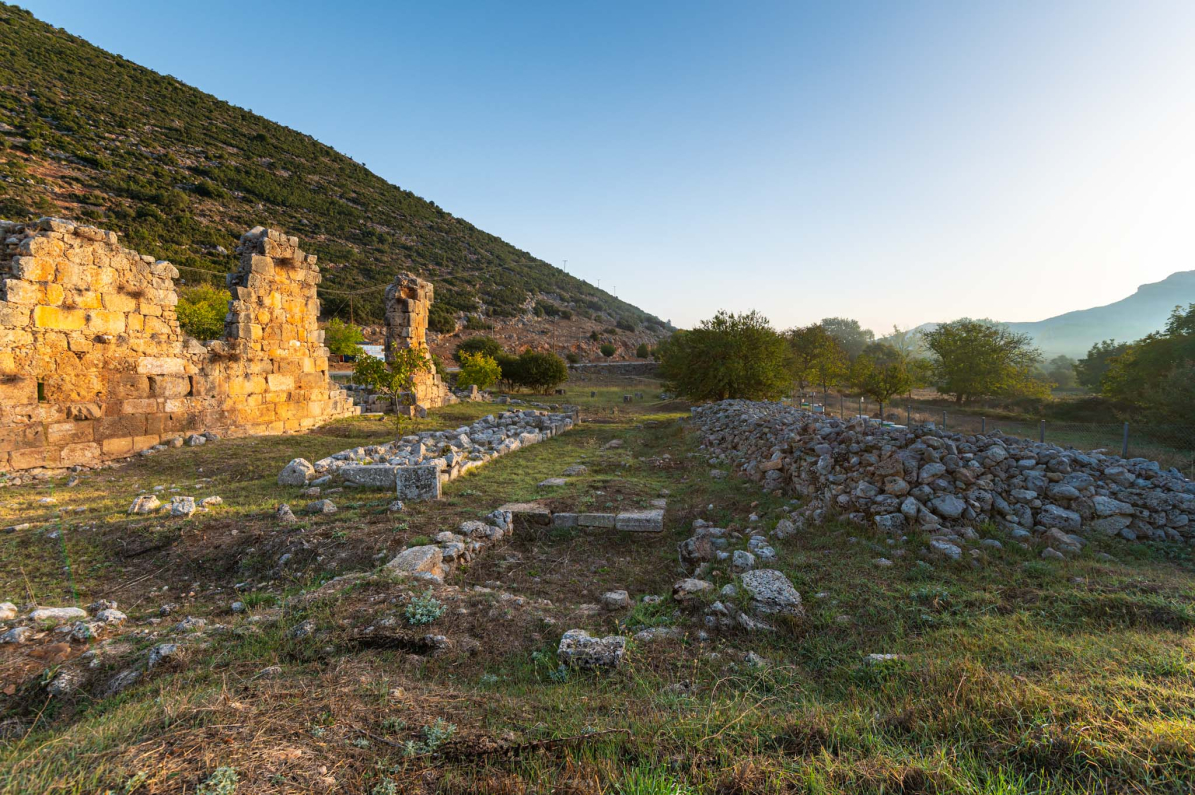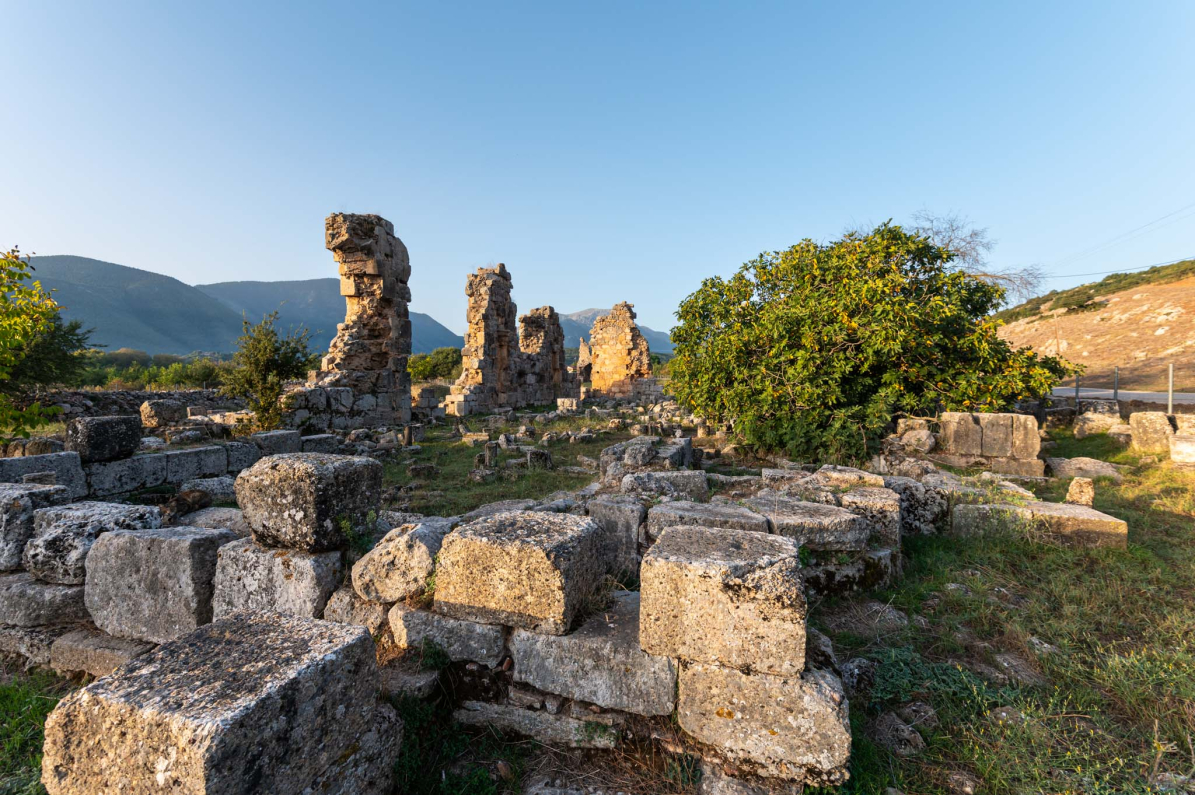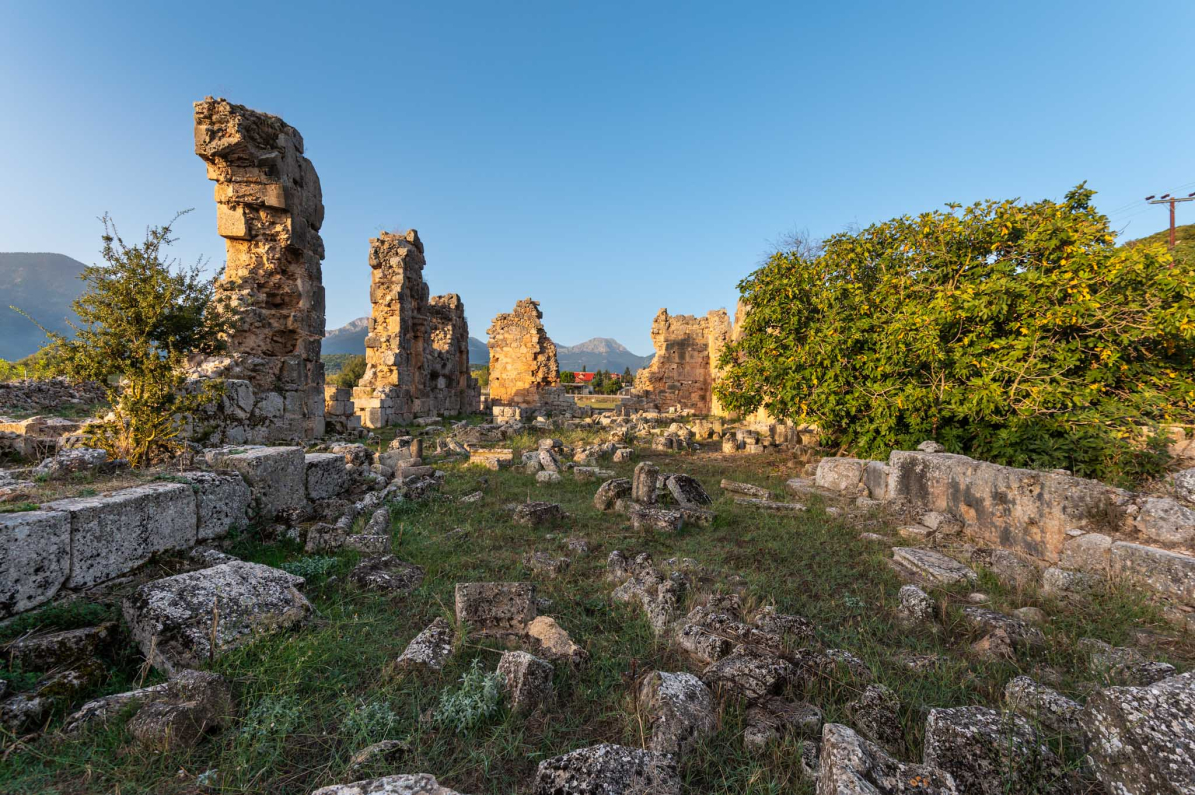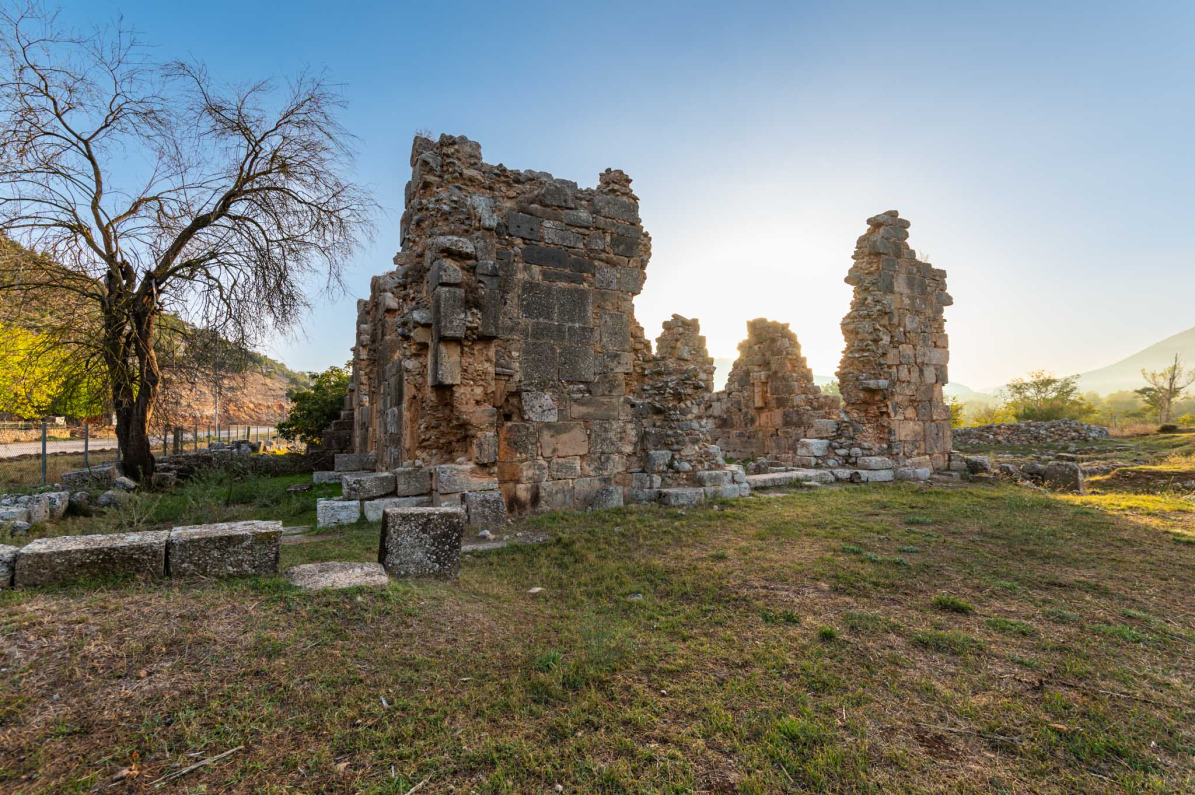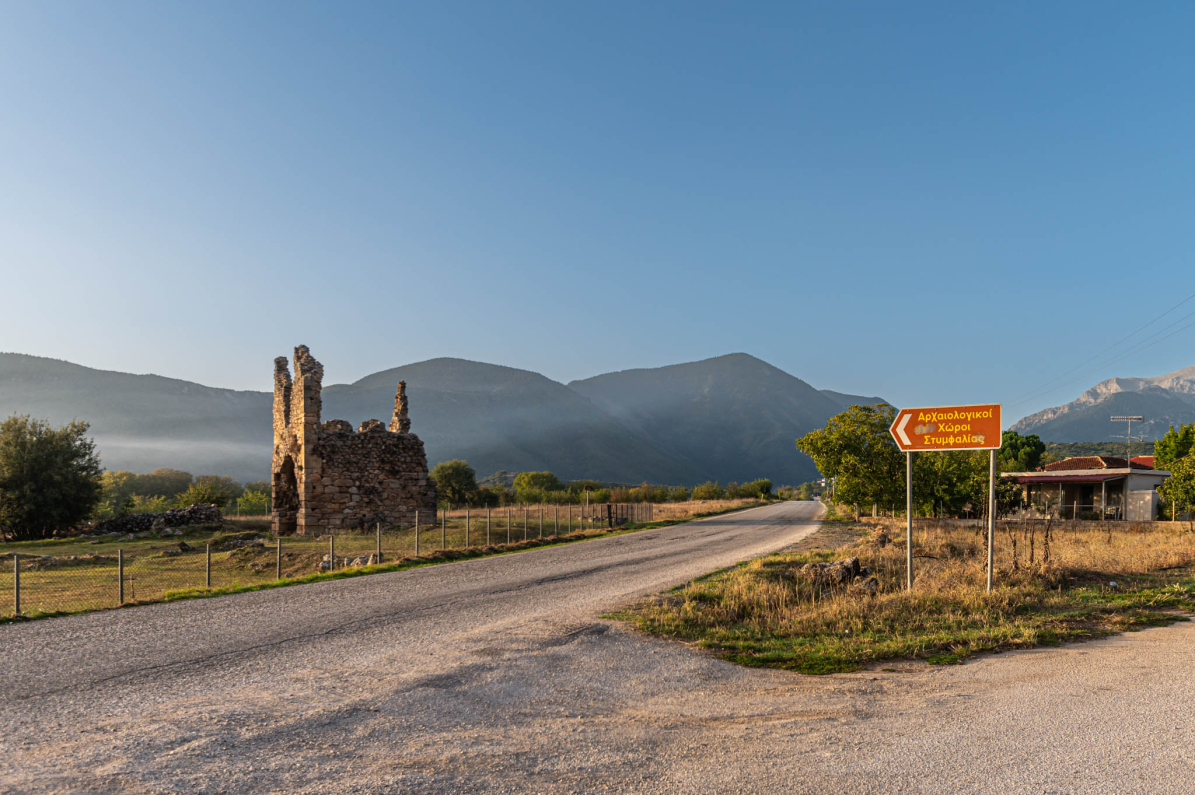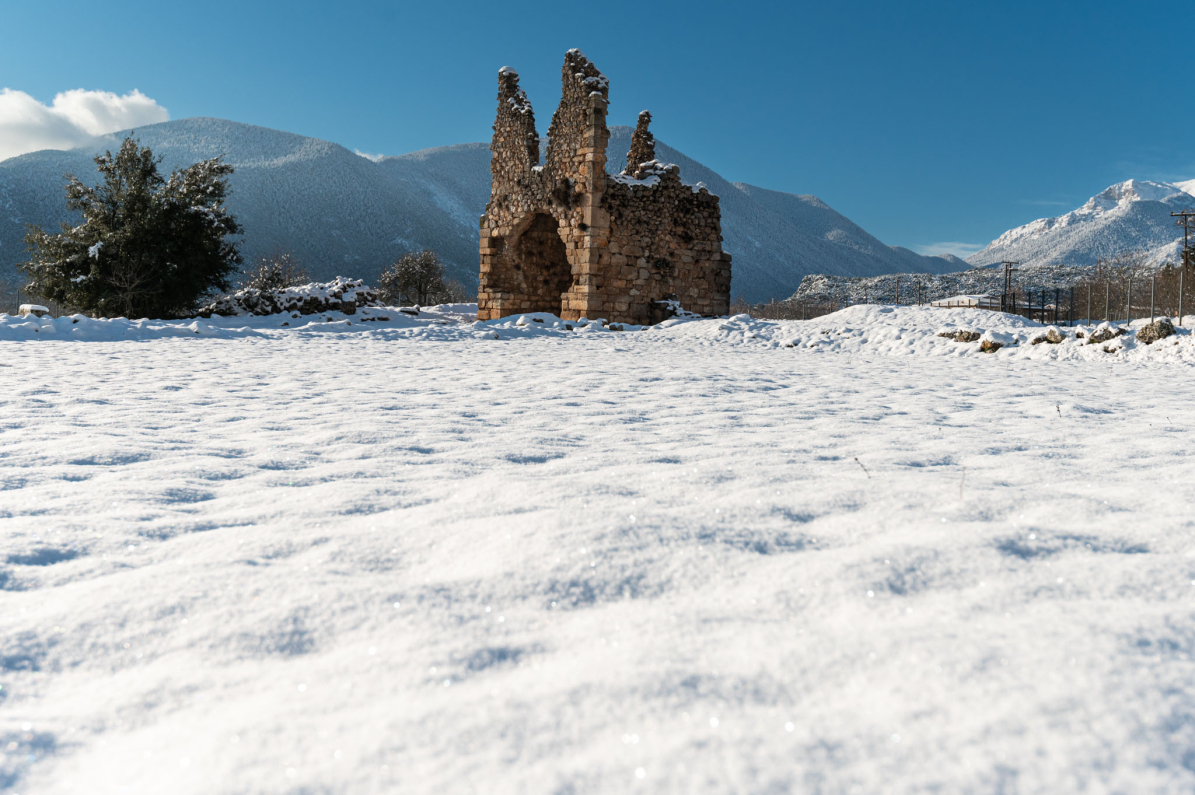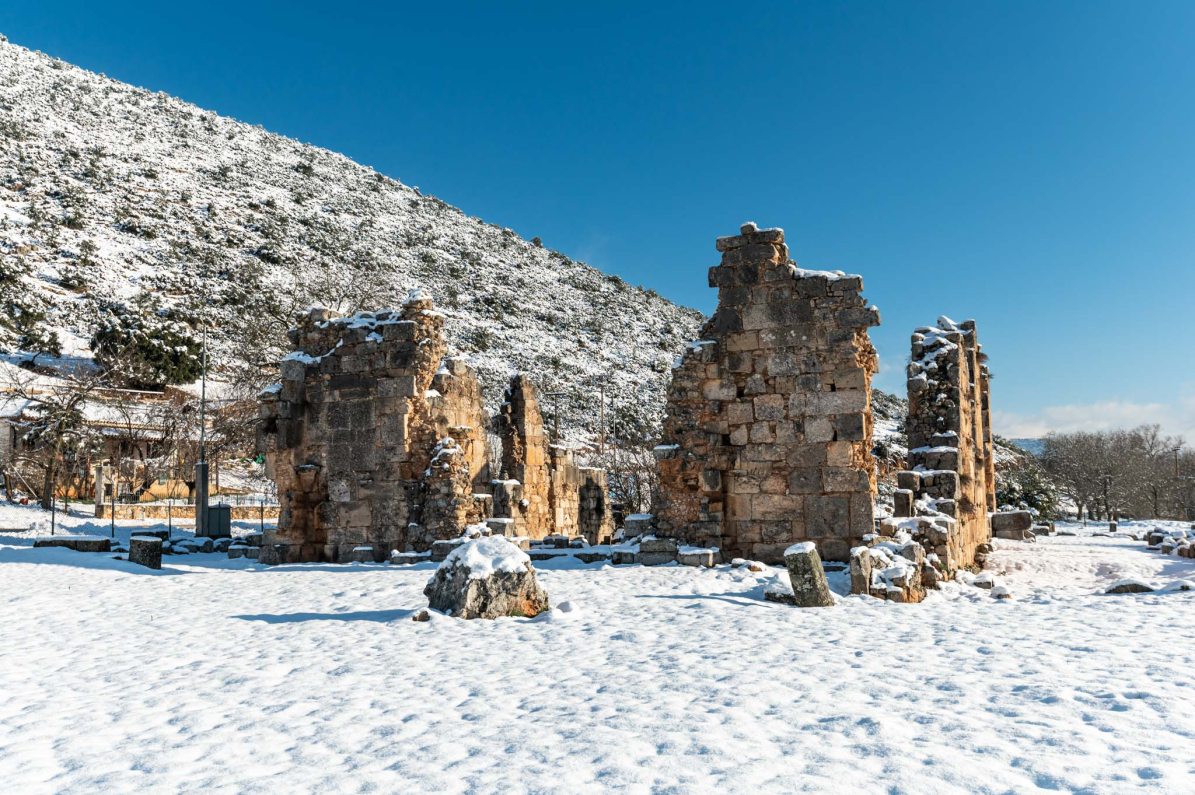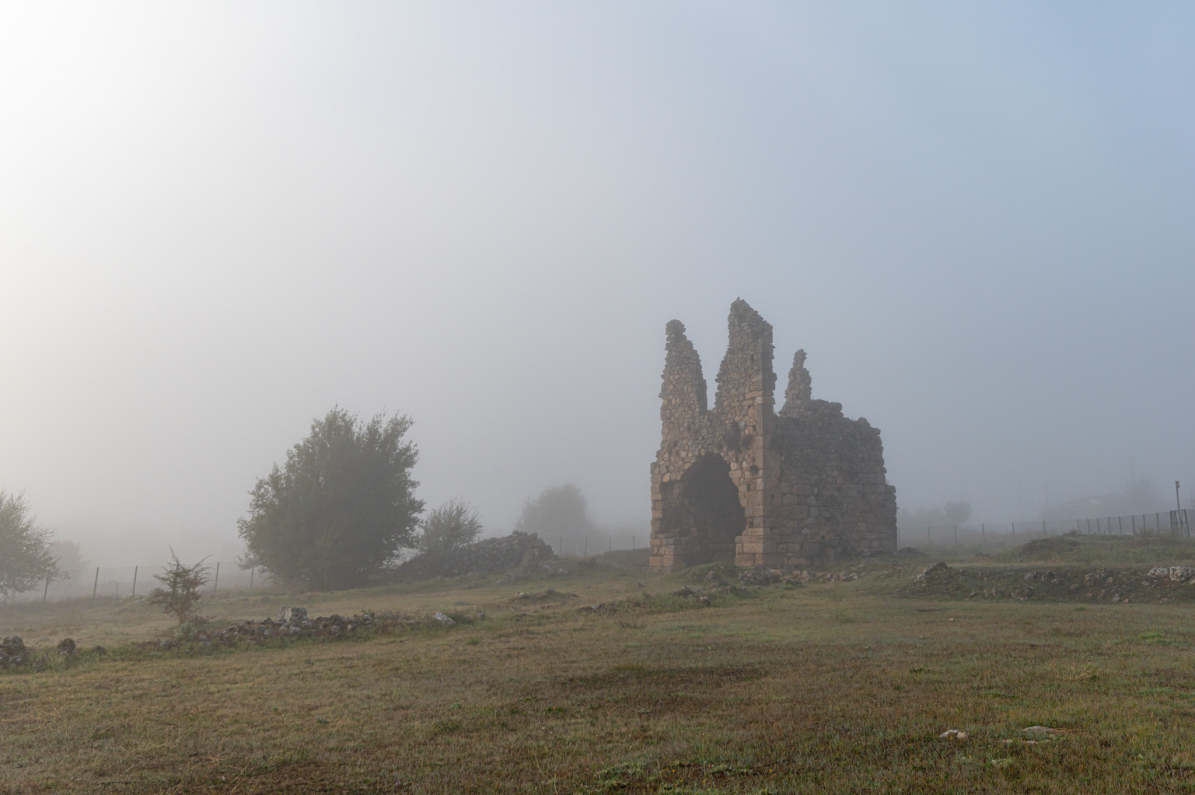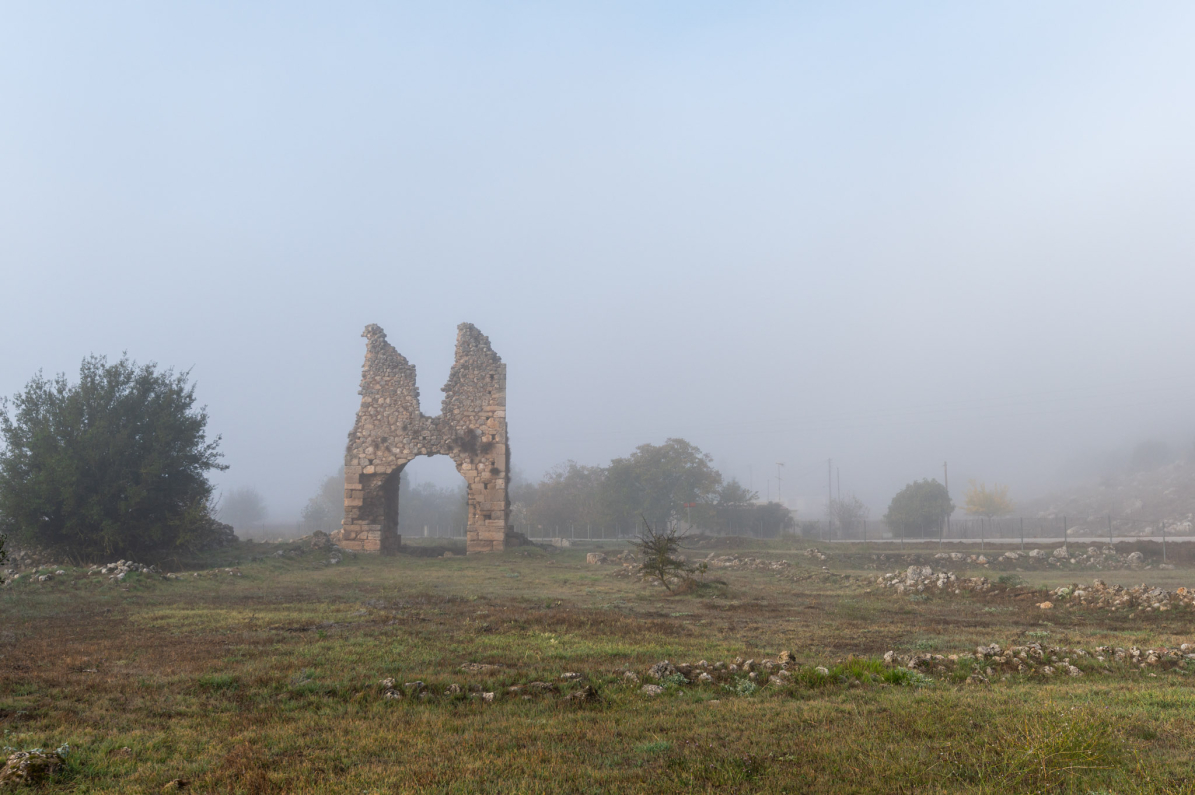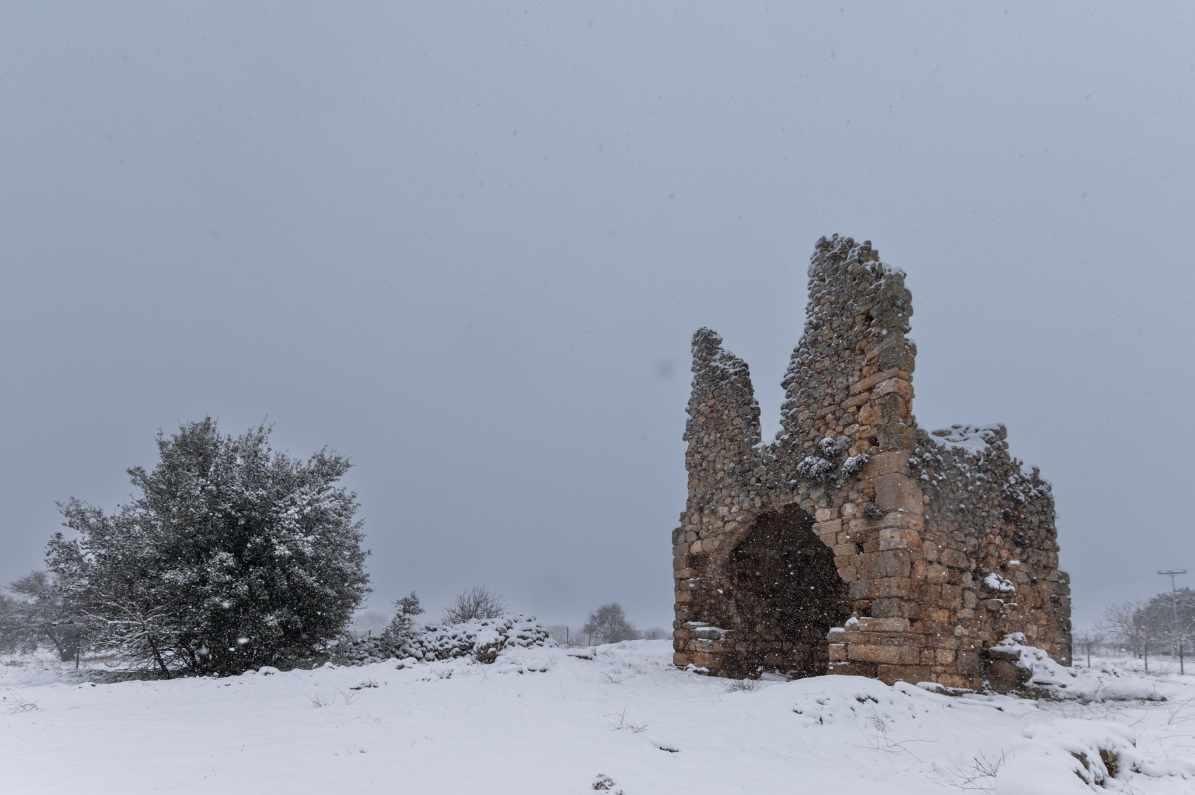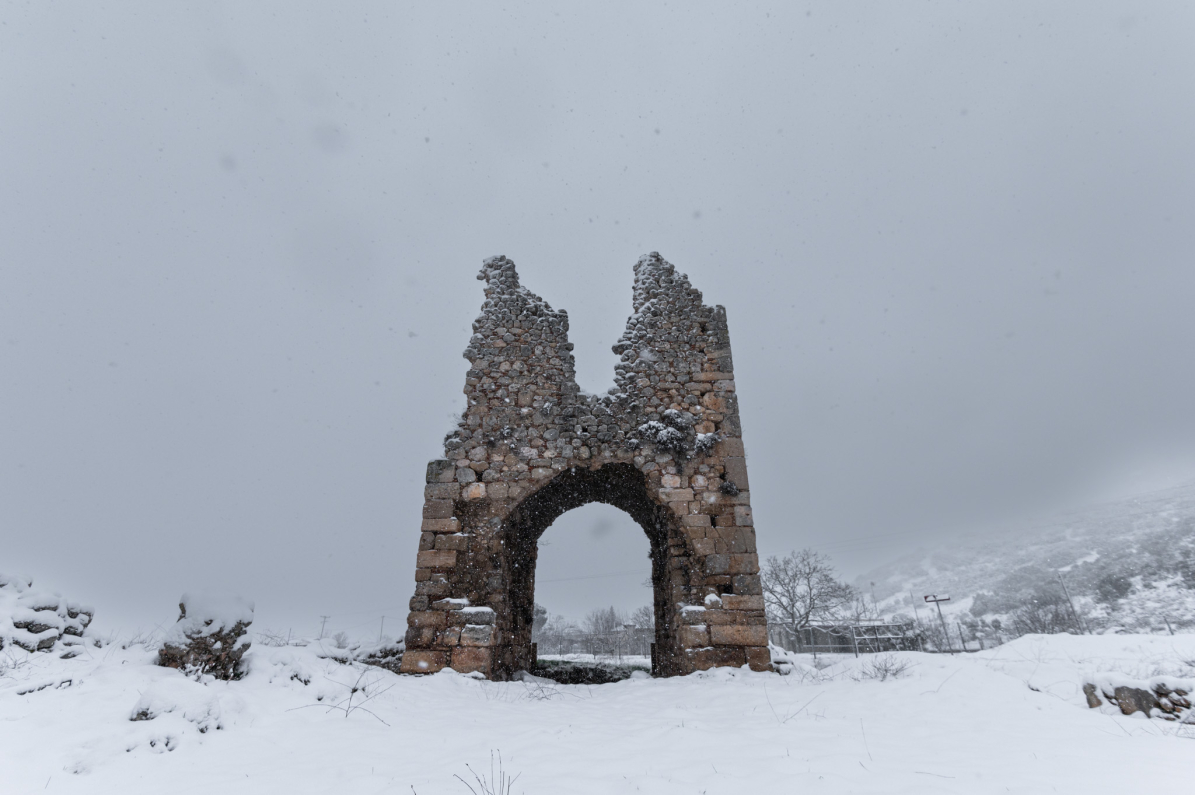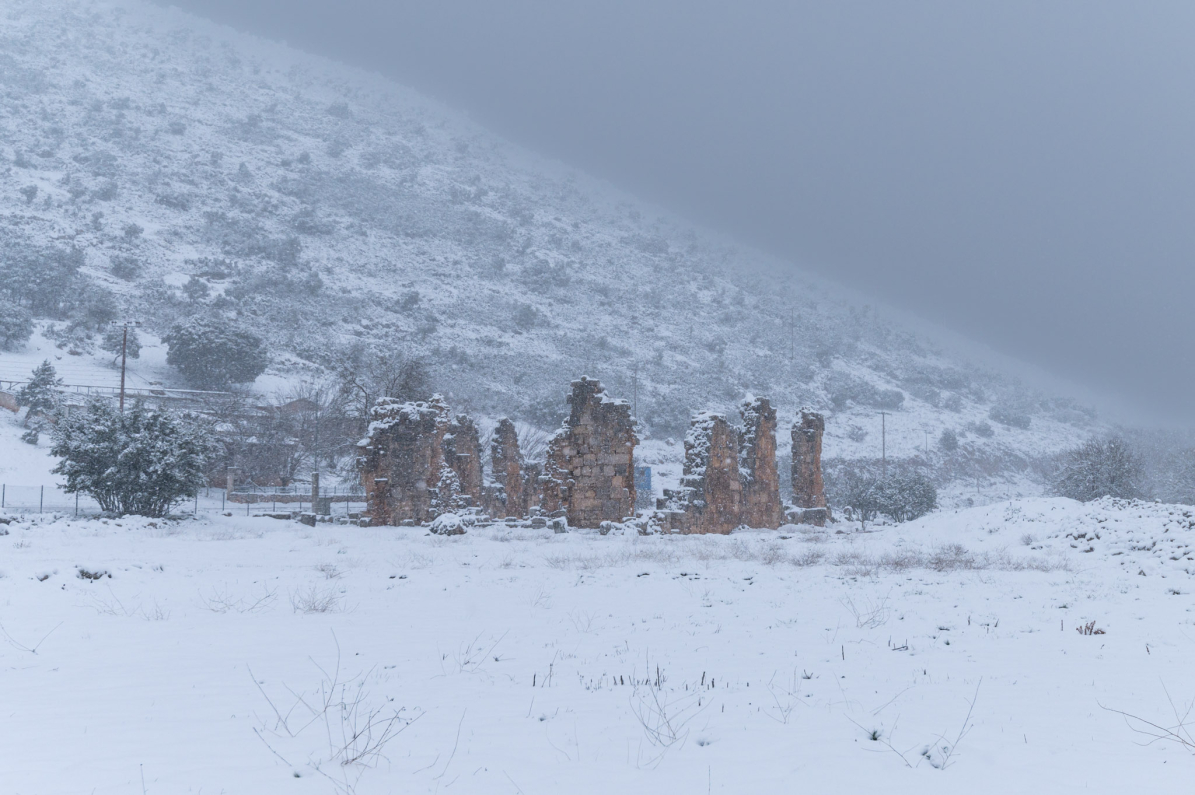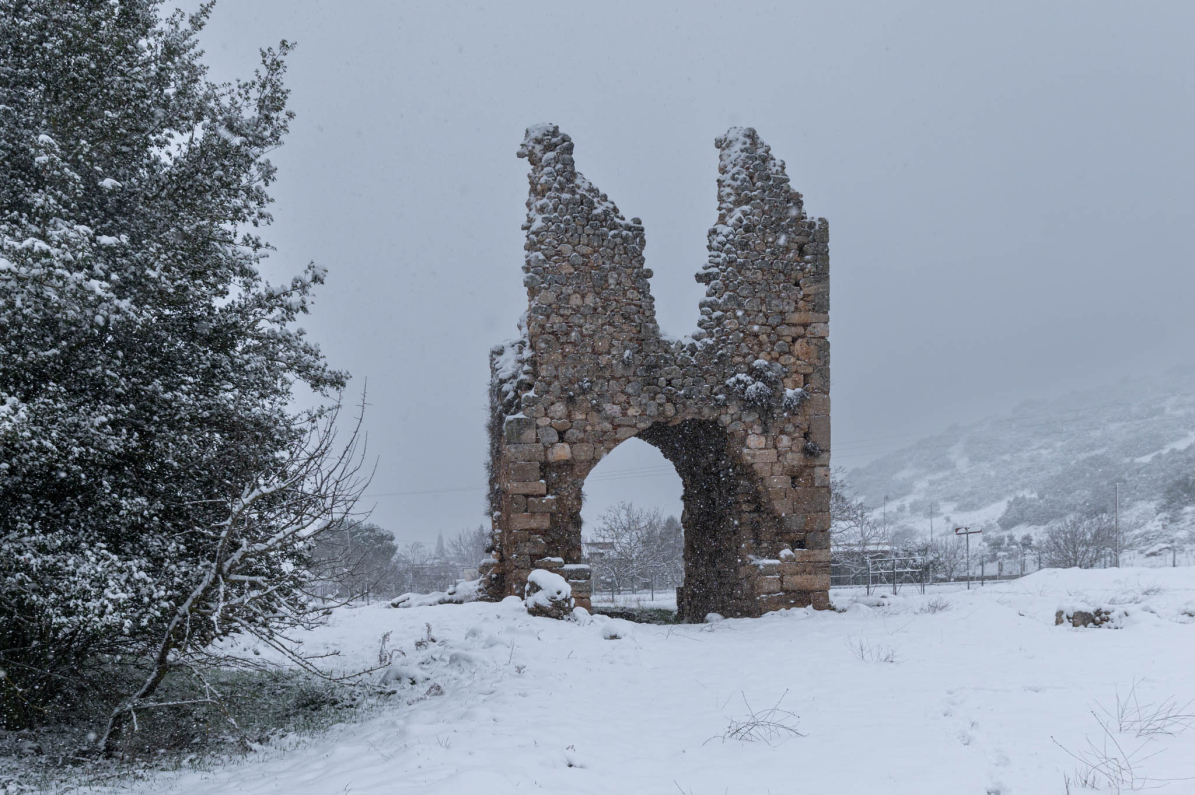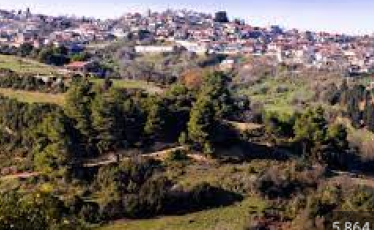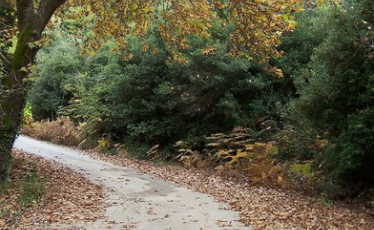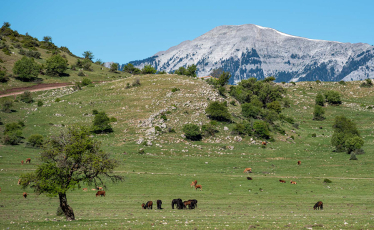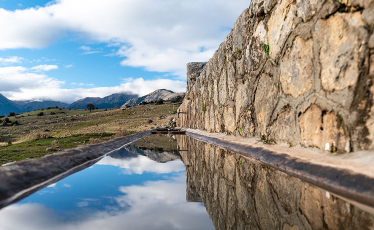Just outside the village of Stymphalia, almost opposite the mythical lake and just before reaching the Stymphalia Environment Museum, the ruins of an impressive medieval monastery can be found on the southeastern side of the road. This is the Zaraka Monastery, the only surviving medieval monument in the region, providing a rare connection to its Frankish past.
Dating back to 1236 AD, a preserved document from Pope Gregory IX reveals the existence of a Frankish monastery in Stymphalia, led by Abbot Peter of "Saraca". This refers to the Cistercian monastery of Zaraka, which was likely built between 1223 and 1224. The document highlights the monastery's importance, as the pope entrusted the abbot with the collection of one-tenth of the revenues from the Latin church of the Peloponnese, to be handed over to Geoffrey of Villehardouin for the defense of the Frankish Principality of Achaea.
The monastery was part of a broader policy adopted by the Franks after the Fourth Crusade and the Fall of Constantinople, which aimed to establish Western monastic orders in newly conquered Greek territories. The choice of Stymphalia Valley as a site for Cistercian monks was likely influenced by the abundant waters of Lake Stymphalia and its fertile surrounding lands. The monastery was a "daughter" house of the Abbey of Hautecombe in France, which itself is built on the shores of Lake Bourget, at the foot of the Alps. This striking resemblance to the Stymphalia Valley, with its mountain peaks and central marshy lake, must have made it feel like a spiritual homeland for the monks.
In line with their order's principles, the monks sought out remote, serene valleys near water sources, far from bustling human settlements. The tranquil, pastoral landscape, fertile soils, and the calming waters of the Stymphalos River and Lake Stymphalia created an ideal setting for monastic life. For many years, the monks lived in harmony with the small local population, building their abbey using ancient building materials and following typical Cistercian architectural principles.
However, it seems the monks' time in Stymphalia was cut short, as archaeologists believe they abandoned the site after only six decades. Their buildings, though, were repurposed for defensive purposes throughout the Venetian period, until May 1458.
At that time, Mehmed II the Conqueror arrived in the area from Corinth, leading 80,000 soldiers on his way to the Castle of Sphyra in the Tarsos region of Feneos. The Ottoman forces brutally conquered the entire Stymphalia Valley, destroying every remaining Frankish structure that could be used as a defensive fortification and massacring many of the local inhabitants.
Today, only a few walls remain standing, defying the passage of time, violence, and decay. Yet, the area still retains the mystique and allure that once drew the Cistercian monks nearly eight centuries ago. Every year, a music festival is held within the monastery's grounds during the July full moon, offering a magical, otherworldly experience. The towering Gothic walls, pointed windows, and ancient stones, recycled from even older temples, create a fairy-tale setting where music, light, and shadow blend to transport visitors through time and space, immersing them in the timeless dance of the universe.


